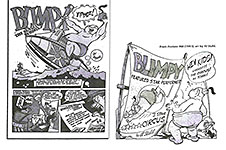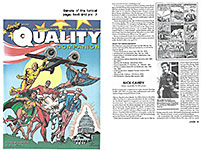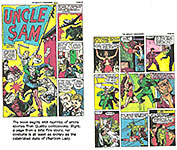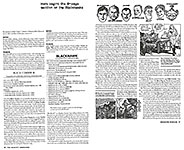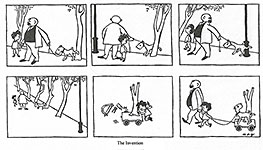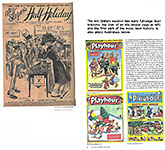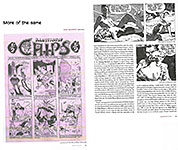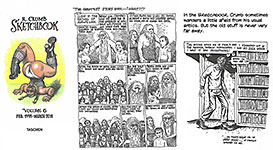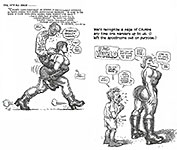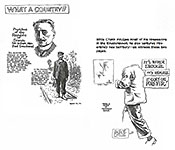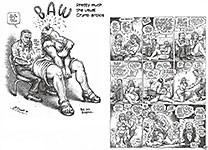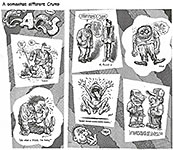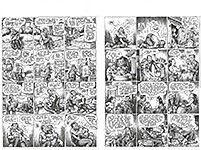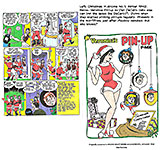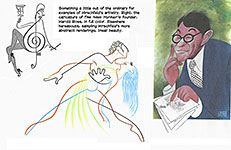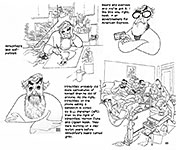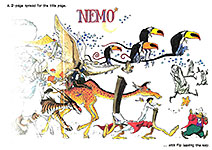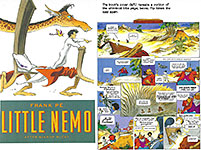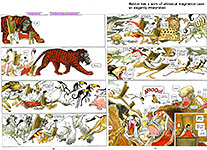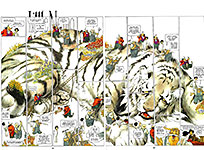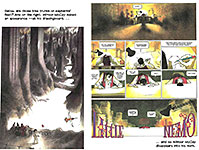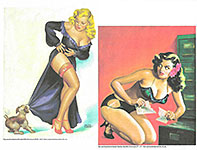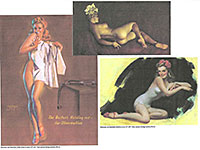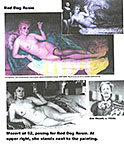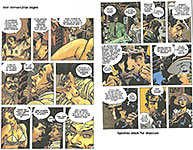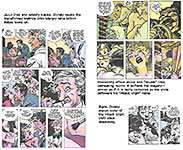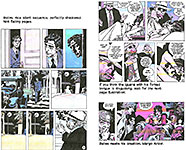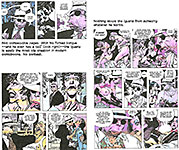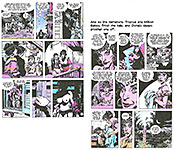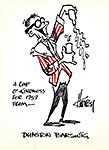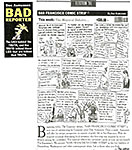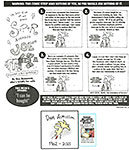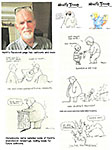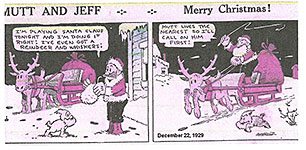 |
||||||||||||||||||||||||||||||||||||||||||||||||
Opus 424 (January 7, 2021): The source of Franklin D. Roosevelt’s term “New Deal” was an editorial cartoon—and we post that cartoon in this opus. We also report on the end of a massive treasure hunt (it wasn’t a hoax!) and Charles Schulz and feminism and Stan Lee interviewed by Larry King and Best Books recommended by Jeremy Dauber, and we review some comicbooks’ first issues, and we post samples of some of the best drawn comicbooks. And among the books we review (eight of them) is one we wonder about, Hirschfeld, The Biography. We also include—:
OUR ANYULE GREETING Attached and Explained and Analyzed Well, it’s still the so-called Christmas Season, so we pause a few seconds here at the start to hope you had merry holidays. We realize we’re late for Christmas but early, we hope, for New Year’s Eve. Or, at least, for the New Year, which’ll have 365 days, any one of which I might be on time for. The attached Anyule Greeting has a history. The history explains why this card has never been reproduced before this. But I’m getting ahead of myself: the history comes later in this opus. For now, there’s just the card—:
MERRY CHRISTMAS And a Happy New Year!!
Yes, this opus was expected to be our Seasonal Effort, Santa Clauses and Elfin carolers and the whole eggnoggy magilla. But as usual, I wrote myself into a hole. I kept adding things to the content, and with each addition came a prolongation. The reasonable date for posting a Christmas Issue started looming closer and closer; then it whizzed right by, passing us altogether—or, rather, we passed it. And Christmas was gone. And then New Year’s Eve. But we’re early for July Fourth. We can still celebrate Christmas. And New Year’s, and the Season. And that’s what we’re doing here this time. Celebrating our Christmas Posting. We’ve spread some Santas around. And we’ve reviewed EIGHT good books, so you’ll know where to spend the gift money Aunt Marjorie gave you. In order to assist you in wading through all this plethora, we’re listing Opus 424's contents below so you can pick and choose which items you want to spend time on. An asterisk* marks the longest items. Here’s what’s here, by department, in order, beginning with the news of the day—:
NOUS R US Lowdown on Editooning Time’s Person of the Year Embracer Group Acquiring Dark Horse Josephine Baker Honored. Again. Source of “New Deal” Revealed *The Treasure Hunt Is Over Wiki Twenty Escorting Tony Bennett Off the Stage
Odds & Addenda Diamond’s Previews Hits No.400 Next Month
*Schulz, Peanuts, and Feminism
FUNNYBOOK FAN FARE Reviews of First Issues Of—: King of Spies The Thing (by Walter Mosley) Newburn Also: End of Moonshine, Human Target— Elegant Illos in both
OUR ANYULE GREETING *History and Analysis Of
TRUMPERIES The Antics and Idiocies of Our Bloviating Former Buffoon in Chief
EDITOONERY Abbreviated and Then Postponed for a Week
Editoons In a Magazine
**STAN LEE MEETS LARRY KING
NEWSPAPER COMICS PAGE The Bump and Grind of Daily Stripping
ACCRETION OF INTENTION DEPARTMENT Books In Need of Good Reviews—: *The Quality Companion Father and Son (Comic Strips from Germany)
BOOK MARQUEE Short Reviews and Proclamations of Coming Attractions
Masters of British Comic Art *R. Crumb Sketchbook: Volume 6, February 1998 - March 2011 Archie: 80 Years of Christmas Hirschfeld: The Biography Little Nemo After Winsor McCay (by Frank Pe)
BEST BOOKS List of Six from Jeremy Dauber, Author of American Comics
BOOK REVIEWS Illustration Magazine No.70, 2021: Girlies by Driben and Zoe
LONG FORM PAGINATED CARTOON STRIPS Review of Graphic Novel—: *The Big Hoax
We Leave Afghanistan
The Night Before... By Clarence Page PASSIN’ THROUGH Don Asmussen Keith Taylor
QUOTE OF THE MONTH If Not of A Lifetime “Goddamn it, you’ve got to be kind.”—Kurt Vonnegut
Our Motto: It takes all kinds. Live and let live. Wear glasses if you need ’em. But it’s hard to live by this axiom in the Age of Tea Baggers, so we’ve added another motto: Seven days without comics makes one weak. (You can’t have too many mottos.)
And in the same spirit, here’s—: Chatter matters, so let’s keep talking about comics.
And our customary reminder: don’t forget to activate the “Bathroom Button” by clicking on the “print friendly version” so you can print off a copy of just this installment for reading later, at your leisure while enthroned. Without further adieu, then, here we go—:
NOUS R US Some of All the News That Gives Us Fits
LOWDOWN ON EDITOONING Jim Hightower, former agriculture commissioner in Texas and now an all-around gadfly pestering all sorts of rigid right wing-nut attitudes, publishes a monthly newsletter, The Hightower Lowdown (to which I subscribe), and in the current issue (Volume 23, Number11, December 2021) he examines the plight of newspaper editorial cartooning in a country where newspapers are in decline. Newspapers are being put out of business by greedy hedge fund profiteers who buy papers and then cut staffing to the point where the paper can’t report anything local anymore and soon simply goes out of business. And the hedge fund goes to the bank with the revenue the paper generates even as it is dying. And the former editorial cartoonist at that paper starts standing in the unemployment lines. Hightower confesses to envying editoonists. “Not in the sense of being resentful, but regretful about my own inability to lift the trade of journalistic commentary to the heights attained by this small, feisty collection of unique public opinionators—political cartoonists.” In this issue of The Lowdown, Hightower is an advocate for editoonists; in every issue of his newsletter, he advocates in another way: he publishes on the front page a special editoon drawn expressly to address the problems that issue discusses. Usually, the editoonist is Brian Duffy. So Hightower puts his money where his mouth is, so to speak. For this issue, Duffy draws himself at a drawingboard, both situated on a block of ice like the polar bear we see in the distance. Hightower does a pretty good job examining the depressing circumstances surrounding career possibilities for editorial cartoonists these days—as you can tell if you print out the four-pager that’s posted near here.
PERSON OF THE YEAR Time magazine picks a Person of the Year every year about this time. This year, it’s Elon Musk. He’s Time’s choice “for creating solutions to an existential crisis [the electric car, I suppose], for embodying the possibilities and the perils of the age of tech titans, for driving society’s most daring and disruptive transformations. ...” (rockets, space ships, etc.). The Person of the Year, saith Time, is “the individual or group who most shaped the previous 12 months for better or for worse.” The magazine wants us to believe that’s always been the over-all selection criteria. But it hasn’t. For at least 2/3 of the century that Time has been naming a “person” (at first, it was “man”) of the year, the selection criteria was “the individual or group that has shaped the news of the year for better or for worse.” The person most in the headlines for 12 months. That was at least certifiable: you could count the days that a person was mentioned on tv’s evening news. Can’t do that with Musk. In fact, I suspect whole months have gone by without his being in the news. So with its “new” (since, I’d say, about 1980) selection criteria, Time can pick just about anyone that a group of its editors decides is somehow worthier than anyone else. Under the “old” historic criteria, Joe Biden would be the Person of the Year. And that brings us to the problem Time has skirted: the Prez of the U.S. probably is in the news every year more than anyone else, so he’d always be Person of the Year under the “old” criteria. Their “new” criteria avoids this little pitfall. I think they could have avoided the problem under the “old” scheme by simply announcing that they’re exempting the Prez. You can see where their head is, though: they also mention Bezos. And, with some of the “old” criteria lingering in the backs of their minds, Zuckerman. I'd go for Zuckerman because of his engagement with social media, which is certainly the most profound societal change of the last few years. The “Person of the Year” issue also names “the best of” several things—books, movies, music albums. The best movie of the year is “The Power of the Dog.” My wife and I watched it about a week ago. When I told my wife about this choice, I said I couldn’t remember anything about the movie. And she said she couldn’t either. Ha. A “best movie of the year” that we can’t remember anything about less than a month after seeing it.
EMBRACER GROUP ACQUIRING DARK HORSE Posted by Milton Griepp Sweden-based videogame company Embracer Group AB has entered into an agreement to acquire publisher and entertainment company Dark Horse Media, the companies announced. The announcement comes just days after Embracer announced that it is acquiring game publisher, distributor, and retailer Asmodee Group for over $3 billion (see “The Price for Asmodee”). ... After the acquisition, Dark Horse will function as the tenth operating group of Embracer Group, with current management, including CEO Mike Richardson and COO Neil Hankerson, continuing to run the company. No restructuring is planned, according to the announcement. Embracer will acquire 80% of the shares of Dark Horse from China-based Vanguard Visionary Assets, which acquired a majority of Dark Horse in 2018. The other 20% will be acquired from Richardson, who told us after the Vanguard Visionary acquisition that he retained a “large chunk” of ownership. The announcement revealed that Dark Horse expects to generate SEK 900 million, or around $99 million at today’s exchange rate, in 2021, with earnings before interest and taxes of SEK 130 million, or around $14 million. Earnings are expected to grow to around $22 million by Embracer’s fiscal year 23/24. “The synergies that exist with the Embracer network of companies promises exciting new opportunities not only for Dark Horse, but also for the creators and companies we work with,” Richardson said of the deal. “I’ve had a number of compelling conversations with Embracer CEO Lars Wingefors and I’m very impressed with him and what he and his team have built.” Embracer sees synergies with its current business in the acquisition. “Dark Horse owns or controls more than 300 intellectual properties, many of which can build a strong foundation for the future development of transmedia IPs and the opportunity to cross-fertilize IP and strengthen licensing partnerships across PC, console, VR and mobile,” the company said in the announcement.
JOSEPHINE BAKER HONORED. AGAIN. Josephine Baker, American-born French singer, dancer, resistance fighter and anti-racist, was moved on November 30 from her grave in Monaco, where she has been since she died in 1975, to be re-interred in the Pantheon, next to the nation’s great and glorious, including the philosophers Voltaire and Jean-Jacques Rousseau, novelists Victor Hugo and Emile Zola. Baker is only the sixth woman, the third Black person, and the first Black woman to get to the Pantheon. A
graphic novel of her life has been published, and we reviewed it in Opus 402 in
April 2020. Born into poverty in segregated St. Louis in 1906, she left an unremarkable singing and dancing career in the U.S. and arrived in France in 1925 as part of La Revue Nigre and quickly made a name for herself. Her specialty was the “Danse Sauvage” which she performed in just a feathered skirt and then another, more provocative number in a skirt made up of 16 bananas. “She was in constant motion, her body wrilthing like a snake,” wrote critic Pierre de Regnier. “Music seems to pour from her body. She grimaces, crosses her eyes, wiggles disjointedly, does the splits, and finally crawls off the stage, stiff-legged, her rump higher than her head, like a young giraffe.” She had a pet cheeta and a pet pig, both of which she took on walks. And she adopted 12 children of different races, her “Rainbow Tribe,” to prove that "children of different ethnicities and religions could still be brothers." But her present status at the Pantheon is doubtless a consequence of her World War II activities. She used her renown and celebrity to extract information from diplomats and dignitaries—which information she then passed on to Free French forces. She used her home in the Dordogne region to shelter resistance fighters. And because of her fame, she could travel much of the continent, which she did—often as a courier for the resistance. In 1961, she was awarded the croix de Guerre and made a chevalier of the Legion of Honor, the highest French decorations, both military and civil. She also joined the protest against racism. She spoke from the Lincoln Memorial on the same day and in company with Martin Luther King, although her words have not resonated as has his “I have a dream” speech. Baker said: “I have walked into the palaces of kings and queens and into the houses of presidents. And much more. But I could not walk into a hotel in America and get a cup of coffee, and that made me mad. And when I get mad, you know that I open my big mouth. And then look out, 'cause when Josephine opens her mouth, they hear it all over the world ...” Gary Younge, a Black man who suffered discrimination when a student in Paris in 1990, wrote the article in the current issue of The Nation (December 13/20) to prove that France is a racist society despite its protestations of color blindness. I don’t know about that: but he’s in a better situation than I to know whereof he speaks. Regardless of that, however, I’m glad he came along, a member of The Nation’s editorial board, because that prompted the magazine to publish several photos of Josephine Baker, which we now post nearby.
SOURCE OF “NEW DEAL” REVEALED It was an
editoon drawn by cartoonist John Baer and published in Labor newspaper of January 1, 1931. Baer has just died at the age of 83, and his obit
focused mostly on the cartoon (which we’ve posted nearby) and its alleged
effect on Rooseveltian politics in the 1930s. In the cartoon, as we can tell, various segments of society—farmers, workers, and “honest business”—are playing cards with Big Business, Crooked Politicians, and Congress, and the segments of society are demanding a “new deal,” an expression right out of card games whatever and whenever they are and wonderfully applicable to the situation in the U.S. in the early Depression 1930s. In the mid- to late-teens, Baer cartooned for a Fargo, North Dakota liberal farm publication, and his cartoons resulted in his being elected and then re-elected to the House of Representatives. “I caricatured my way into Congress,” Baer said, “—and cartooned my way out.” He was defeated in his second attempt at re-election in 1920. After that event, he went back to work, cartooning at Labor, a publication for transportation industry workers, where he worked for the rest of his cartooning work life. The term “new deal” was scarcely introduced into the political milieu by Baer; it had been bandied about through the 1920s. Baer resurrected it in his January 1931 editoon when pondering the forthcoming Election Year, 1932. He used the expression again in a cartoon published on July 2, 1932. And Franklin Delano Roosevelt formally adopted the phrase as a campaign slogan when that summer he accepted the Democrank nomination for Prez, saying (among other things): “I pledge you, I pledge myself, to a new deal for the American people.” Baer was a life-long liberal. But he had no use for the present state of affairs hereabouts. “I don’t give a whoop for either party,” he said in a recent interview. “There are only about 10 liberals in Congress today,” and he added that he wouldn’t give ten cents for the rest. How liberal was he? Just this liberal: when in Congress, Baer introduced a bill for World War I veterans that resulted in the distribution of $100 million in bonus benefits. In addition to editooning, Baer also did some designing: he designed the first emblem of the United Nations, the seal of the AFL/CIO, and the seal of Pan American Airways. You don’t have to be liberal to do that.
THE TREASURE HUNT IS OVER Man Who Found Hidden Treasure in the Rocky Mountains Is Revealed The man who last summer found a hidden treasure chest said to be worth about $2 million — a treasure that had tantalized fortune seekers for a decade, led to at least two deaths and spawned lawsuits against the art dealer who stashed it — was identified as a medical student from Michigan, reported Neil Vigdor at nytimes.com It was Jack Stuef, 32, who located the treasure chest that antiquities dealer Forest Fenn had stashed in Wyoming in about 2010. After hiding the treasure, Fenn, who died a year ago at 90, wrote about the hidden treasure chest in a self-published memoir, The Thrill of the Chase, in 2010 and provided clues to the location in 24 cryptic verses of a poem. “It set off a modern-day treasure hunt,” wrote Vigdor last December, “one in which at least two people died trying to find the cache and prompted a New Mexico State Police chief to urge Fenn to stop the hunt in 2017, saying that people were putting their lives at risk.” The stash consisted of gold nuggets, gemstones and pre-Columbian artifacts, Fenn’s grandson, Shiloh Forrest Old, wrote on a website dedicated to the treasure. “We congratulate Jack on finding and retrieving the treasure chest, and we hope that this confirmation will help to dispel the conjecture, conspiratorial nonsense, and refusals to accept the truth,” Old wrote. Stuef told Outside magazine that he learned of Fenn’s hidden treasure in 2018 and became obsessed with recovering it. “I think I got a little embarrassed by how obsessed I was with it,” Stuef told the magazine. “If I didn’t find it, I would look kind of like an idiot. And maybe I didn’t want to admit to myself what a hold it had on me.” Stuef did not say where he found the treasure chest, and he expects to auction off the treasure. “Alas, I’m a millennial and have student loans to pay off,” Stuef wrote on Medium website, “so it wouldn’t be prudent to continue to own the Fenn Treasure.” Two days after the discovery, a Chicago lawyer filed a lawsuit in U.S. District Court in Santa Fe against Fenn and the then-anonymous person who found the treasure. The lawyer, Barbara Andersen, said that after she had spent several years painstakingly deciphering Fenn’s poem and scouting out the general location of the treasure, someone hacked her cellphone and stole proprietary information that led them to the trove. In her lawsuit, Andersen asked the court to block the items in the treasure chest from being auctioned and to turn the chest over to her. Hey: c’mon—luck of the draw, kiddo. You lost. According to Stuef’s LinkedIn profile, he graduated from Georgetown University in 2010 and had worked as a journalist and for the satire website The Onion. Stuef also wrote for the political blog Wonkette, where he caused a firestorm in 2011 when he mocked the youngest son of former Governor Sarah Palin of Alaska, who has Down syndrome. He apologized and left the publication.
WIKI TWENTY Wikipedia is 20 years old this year, and it’s being celebrated at 20 years of Wikipedia. Here’s founder Jimmy Wales: “I founded Wikipedia 20 years ago. Since then, our beloved encyclopedia has grown a lot, through good times and hardships, and today, more than ever, it is serving its true purpose. It helps millions of people study, discover, explore, and research. “Each day, Wikipedia gives readers a new chance to acquire the knowledge that is so rightfully theirs, no matter what their circumstances might be.”
Escorting Tony Bennett Off the Stage My wife and I watched Tony Bennett's "One Last Time..." with Lady Gaga. What a marvelous thing! Bennet’s 95, but his voice shows no signs of age. No crackling or wavering around the edges. It's as large as ever. He can sing that he lost his heart in San Francisco, but there’s plenty of heart left in his voice. As revealed last summer, Bennett has Alzheimers and not much short term memory. But, his wife says, he can remember song lyrics, and as soon as he steps on stage and the music begins, everything he ever knew about songs and singing apparently comes flooding back, as big as life itself. He stood with his right arm resting on the piano, perhaps holding himself steady as he sang. And when the applause soars, he looks out to the crowd and says, “Wow!” It was amazing to watch. And to hear! That huge voice filling the cavern in front of him “with ringing vocal verve, hitting big notes and finding the intangible phrasing that makes standards from Berlin and Porter and the rest ring with lasting fervor.”
At the end, Gaga says, “Tony—we’re all so grateful to have witnessed your talent, your generosity, your creativity, and your kindness, and your service throughout all these years.” She takes his arm, and says, “Mr. Bennett, it would be my honor to escort you off the stage.” And Bennett waves one last wave to the crowd as the band plays them off, Gaga holding his arm—perhaps holding him steady, too. Wow.
ODDS & ADDENDA Previews, Diamond Comics Distributors’ monthly magazine and catalog of forthcoming comics (which the natives call a “mag-a-log”), has reached its 399th issue with the current number and promises some sort of blow-out next month for the 400th. ... Image is in its 30th year; where’s the party? ...
Fascinating Footnit. Much of the news retailed in the foregoing segment is culled from articles indexed at https://www.facebook.com/comicsresearchbibliography/, and eventually compiled into the Comics Research Bibliography, by Michael Rhode, who covers comic books, comic strips, animation, caricature, cartoons, bandes dessinees and related topics. It also provides links to numerous other sites that delve deeply into cartooning topics. For even more comics news, consult these three other sites: Mark Evanier’s povonline.com, Alan Gardner’s DailyCartoonist.com (now operated without Gardner by AndrewsMcMeel, D.D. Degg, editor); and Michael Cavna at voices.washingtonpost.com./comic-riffs . For delving into the history of our beloved medium, you can’t go wrong by visiting Allan Holtz’s strippersguide.blogspot.com, where Allan regularly posts rare findings from his forays into the vast reaches of newspaper microfilm files hither and yon.
FURTHER ADO “Don’t give your son money. As far as you can afford it, give him horses. No one ever came to grief—except honorable grief—through riding horses. No hour of life is lost that is spent in the saddle. Young men have often been ruined through owning horses or through backing horses, but never through riding them; unless of course they break their necks, which taken at a gallop, is a very good death to die.”—Winston Churchill, My Early Life
SCHULZ, PEANUTS, AND FEMINISM By Freda Moon, quoted from sfgate.com Moon made a visit to the Charles M. Schulz Museum in Santa Rosa, California (which only recently re-opened and is planning for the 100th anniversary of Schulz’s birth), and we’re quoting from her report of that visit. Most surprising to me was what an adult museum it was — more focused on Schulz’s biography and the deeper themes of his work than your run-of-the-mill place for kids to get their Snoopy fix. ... What finally motivated me to drive the 100 miles north from my East Bay home was a pair of exhibits looking at Peanuts’ portrayal of its female characters: the inimitable Lucy, Sally, Peppermint Patty, Marcie, Violet and more. Reading the comic again as as an adult, now as a mother to a young daughter, Peanuts’ treatment of gender has struck me again and again. The strip began in the 1950s — an archetypically conservative American decade — and was syndicated for a half-century before the last cartoon ran on the morning of Schulz’s death. But in revisiting this childhood staple, I realized how ahead of its time it was in its portrayal of female characters — how seriously it takes little girls. Taking kids seriously was, of course, what Schulz did so well. The Peanuts world was a child’s world, one where adults don’t feature and kids are full, and complex, people. They’re intense and quirky, anxious and self-possessed, opinionated and insecure. They get the same nuanced treatment that fictional adult characters receive elsewhere, even while their concerns, preoccupations and pastimes are those of childhood. Long before Pixar began making animated movies that adults could watch without yawning boredom, Peanuts was giving us neurotic Charlie Brown and his exceedingly confident beagle, a gender nonconforming Peppermint Patty and Lucy, a dictator-in-training. A man of mid-century, middle America — at least until he came west to California — Schulz’s characters are largely free from rigid gender norms. Within the Peanuts world, these little kids are granted emotional and intellectual depth that feels, in its way, revolutionary. (It was also a massive commercial success. Even now, two decades after his death, the Peanuts empire is going strong — only Michael Jackson and Dr. Seuss [aka Theodor Seuss Geisel] earned more in 2020, according to Forbes. Those Peanut earnings are, in part, owed to an exclusive deal with Apple TV Plus that makes that loathed platform the only place to stream Peanuts holiday specials.) Schulz’s feminist inclinations weren’t overt and his comic doesn’t hit you over the head with a political message. But the message is there, subtle but unmistakable. “The Girl Power in Peanuts!” exhibit ran through November 8, but the Charles Schultz Museum is worth a visit any time of year.
FUNNYBOOK FAN FARE Four-color Frolics An admirable first issue must, above all else, contain such matter as will compel a reader to buy the second issue. At the same time, while provoking curiosity through mysteriousness, a good first issue must avoid being so mysterious as to be cryptic or incomprehensible. And, thirdly, it should introduce the title’s principals, preferably in a way that makes us care about them. Fourth, a first issue should include a complete “episode”—that is, something should happen, a crisis of some kind, which is resolved by the end of the issue, without, at the same time, detracting from the cliffhanger aspect of the effort that will compel us to buy the next issue. A completed episode displays decisive action or attitude, telling us that the book’s creators can manage their medium.
THE FIRST ISSUE of King of Spies explodes in action sequences so numerous that there’s scarcely room left for a story. The first 10 pages are all action—lots of guns going off and things exploding. And, in the distance, a tiny figure, shooting a gun in both hands and falling through space. This, it turns out, is Roland King, a spy, in his prime. When we meet him on the thirteenth page, he’s an old man with a thick gray beard, standing in his shorts looking at himself in the mirror. Turns out, he has a fatal disease, something called globlastoma, and will die in six months. After a bout with a bunch of bullies (he kills them all with his bare hands), Roland decides to spend his final weeks ridding “the world of all the old monsters” and trying “to make it up to the people I let down.” Writer Mark Millar manages to squeeze in one episode that’s not all exposions:
Roland witnesses the bullies treating a waitress badly and undertakes to teach
them a lesson. (Which he does, killing them all, as I said.) We learn from this
that Roland is a sensitive soul and a more than capable fighter. He is a man of
honor who will not tolerate bullies. And Millar and his artist, Matteo
Scalera are capable of staging this action in a suspenseful manner that (as
we now expect) explodes in an But it’s Scalera’s art that is simply breath-taking. Even the most exploding sequences are crammed with tiny visual details. His line flexes wonderfully, and he leaves no aspect of the story unillustrated as we plunge along. And he has a sense of visual humor: many of the walk-on walk-off characters of whom we expect nothing, Scalera enriches with a tell-tale smirk or a lifted eyebrow that turns an otherwise unremarkable visage into a comedic mask. And so we smile in appreciation. The book is a delight.
WALTER MOSLEY begins his turn on The Thing (No.1) with four pages of silence as a hooded character (a dead ringer for Death) marauds Brooklyn, frightening people. He attacks a bully sort of character and pulls his heart out, leaving the victim conscious and wondering, “What do you want?” Then Ben Grim returns to the Baxter Building (Fantastic Four hq) from a fishing trip with a bag full of catch. Alicia is away. No one is there. The next day, Ben sees Alicia on the arm of an art gallery owner, Mr. Vasquez, who has a special exhibit for the blind. Ben is immediately jealous and behaves badly, wrecking a few cars. The Death guy lurks in one panel in the corner of the page. The cops come and put cuffs on Ben. Then he awakens as if from a bad dream. Hercules is there. Ben whomps him. Elsewhere, a brawny character named Brusque shows up, carrying automobile tires. Back with Ben in police custody, Reed Richards arrives with papers that permit him to take Ben to the Baxter Building under house arrest. Ben goes with him, taking along a fragment of the ceiling of the room where he and Herc were confined. Ben goes for a long walk, and when he returns, Alicia is there, and when he approaches her, she says, “Don’t touch me,” and announces that they should spend some time apart, seeing other people. She leaves her ring on the table and says, “Goodbye.” Then a Tinkerbell sort of fairy character named Calixte—“the avatar of Elysium courtship dancers”—wants to “study” Ben. Next, the pages turn red for Ben’s encounter with Death. Ben whomps him one, but the marauder gets a heart from him anyhow. When Ben awakens, a woman, Amarllis Dejure, appears on his tv. He meets her at Radio City later that day, and when he tells her that her eyes are beautiful, the bully Brusque suddenly appears with automobile tires on his arms like shirt cuffs, shouting, “Get away from that woman, Thing—she’s mine!” End if issue. Dunno what to make of it. And all the spooky other worldly stuff is not my recollection of Mosley’s manner. He’s more down-to-earth and ordinary life.
Maybe Mosley took the comics gig because he wanted to escape, a little, the raw realism of Easy Rawlins’ world and luxuriate in the fantasy of superheroism. The only other thing worth reporting here is a quirk of artist Tom Reilly’s, which is evident in the accompanying illustrative matter.
THE FIRST ISSUE of Newburn is thin on action but chubby in revealing the personality of its title character. The title character is Easton Newburn, a retired cop who is now a private investigator “on retainer” with all the major crime families in the city. We meet him in the book’s opening sequence as he begins investigating the murder of Carmine Albano. Albano is a member of an “old school” crime family reining in New York and New Jersey, a territory exclusive that is being encroached by the other biggest crime family, the Carraros in the Bronx. And the Carraros are immediately suspected for the murder of Carmine. All of this issue is devoted to Newburn’s exhaustive examination of the crime, which is performed in the most meticulous manner imaginable. By the end of the book, Newburn has solved the murder, and on the last page, he invites the murderer, an attractive AfricanAmerican woman (who is not, I think, a Carraro) to work for him. We
must admire writer Nadia Shammas’ skill in conducting a crime scene
investigation and the subsequent developments—all by the book. And artist Ziyed
Yusuf Ayoub likewise displays a conspicuous talent, investing his pictures
with telltale chips of line that define forms and shapes. (Exactly the sort of
thing that annoys me; but that’s a personal preference rather than a
professional judgment, which, as I said, must admire his skill.) The pictorial narrative is interrupted several times with a page of solid black against which white typography from “Emily’s Journal” explains aspects of the setting—who the Albanos and Carraros are, f’instance. But we don’t know who Emily is. So Shammas leaves us in suspense with two mysteries to solve or explain: why does Newburn want to hire the murderer, and who is Emily? To find the answers, I might very well buy the next issue. The last 5 pages in the book are drawn by someone else who is not credited. These pages presumably introduce us to another comicbook, tantalizing us so we’ll buy that book. But nothing on these pages identifies the book or its producers. A puzzle and therefore a waste.
MOONSHINE, EDUARDO RISSO’S brilliantly illustrated tale of werewolvery by Brian Azzarello, ends with the 28th issue. I’ve never been a particular fan of werewolfs and similar spookiness, but Risso’s art was consistently wonderful, and so I looked forward to every issue. At first, the story seemed to be about hillbillies and brewing mountain dew. Then the werewolves started appearing. Hereabouts are a few snapshots of Risso’s stunning artwork.
AND SPEAKING OF BRILLIANT artwork, here’s The Human Target No.2 with painterly pictures by Greg Smallwood. Tom King’s story doesn’t advance much. Christopher Chance, “the human target,” who, we found out in our review in Opus 423, is targeted by an assassin, meets Ice, a beautiful woman with freezing superpowers, who wants his help. They spend the entire issue talking. They talk during a drive to the beach and while walking on the beach and while swimming in the ocean. We never find out, exactly what sort of help Ice needs but it has something to do with the Justice League. All the talk is the kind men and women have when they’ve just met and are getting to know each other. Here, Ice is flirting with Chance. But it doesn’t matter that the plot is obscure. It’s Smallwood’s exquisite art that holds us. That and the page layouts that give us the visuals in slices. Seventy years ago, Smallwood would be drawing his painterly pictures for magazines like The Saturday Evening Post and Collier’s, magazines that printed short fiction—romances with pretty women in them. Smallwood’s rendering of Ice would be perfectly at home illustrating a romance in that tradition. Nearby, we’ve posted examples of his seductive work.
Judging from Smallwood’s work here—and that of several other artists in issues of comicbooks over the last 2-3 years— comicbooks are now the refuge for illustrators who’ve been abandoned as magazines like Collier’s folded or locked out by the “new” media that don’t include illustrated material. If you’ve wondered, as I have, where all the brilliant artwork in some comicbooks comes from, now we know: it comes from the same old places that once found outlets in the commercial press that no longer exists. Those old places have become comicbooks. And some of the illustrators, judging from their names (usually a mistake but maybe not here), were not born and raised in these United States. They seem Italian. Or Spanish. Pacific Islands? Wherever, their superior illustrative work is highly appreciated here at the Rancid Raves Intergalactic Wurlitzer. Big THANQUES and keep on keepin’ on.
OUR ANYULE GREETING Is Attached and Explained and Analyzed And it has a
history. The history explains why this card has never been reproduced before
this appearance. About a year ago, I was flung, suddenly, into contact with the children of a just departed cousin. They were calling to tell me he’d just departed. This led to an exchange of e-mails in which I rehearsed aspects of the family history that they were not familiar with—including my relationship with their grandfather, my uncle (whom I call a “favorite uncle” on the card itself). My uncle had professed an interest in my cartooning ambitions when I was a teenager in high school, and I used to send him a cartoon-decorated letter every other month or so. Turns out, he kept them all. In cleaning out various residences that they intended to sell, his grandchildren found heaps of my cartoon letters, and they asked me if I wanted them, and, of course—being a hoarder and keeper of nearly everything— I said Yes. Among the cartoons was the Christmas card I did in 1959, the one that’s attached. The original art measured 11x14 inches. After drawing it, I folded the paper in half, taped it shut, and addressed and stamped it to send to my “favorite” uncle as a self-mailer. When I saw this specimen 62 years later, I was astonished. I had no memory of doing the card. The year of its execution, 1959, was the year I graduated from the U. of Colorado. And New York appears at the upper right because from Boulder after graduation, I went to the Big Apple to try to sell cartoons to magazines, many of which had offices in New York. (I ended by selling one—ONE—after two months of submitting stuff on “look day,” then a Wednesday, the day magazine cartoon editors held open house for cartoonists to submit their cartoons in person.) I returned from New York in November to live with my parents in Kansas City while I awaited the summons from the Navy. And it was then that I drew the card. It has never been duplicated (until now); I never made a copy of it. And the original existed only in the heap of my stuff that my uncle kept. That it survived at all is something of a minor miracle.
One of the things that astonished me about the card is that it is drawn in a very loose almost sketchy manner, not at all resembling the tight drawing style I was then, in 1959, deploying in the one-panel gag cartoons I was trying to sell to magazines—as you can doubtless tell from the accompanying sample. The coloring of the Christmas card is also sort of slap-dash. In all, a very pleasing prospect: I was impressed. At
the distance of 62 years, I can look at the drawings as if they had been done
by someone else. I’m no longer involved in the production. In other words, I
can do as dispassionate a critique of “my” work as any anonymous critic.
Herewith—: The lettering is as casual as the drawing style. Almost sloppy. And therefore appropriate to the pictures. At the upper right, my self-caricature still has all his hair. He’s also arrayed in a peculiar costume—a bandoleer and shoulder epaulets plus sandals. The first two suggest a warlike enterprise—assaulting the cartoon-publishing magazine fortress in New York. The distinctly unmilitary sandals suggest my post-graduate poverty. The Christmas caroler at the left, mid-page, has a suitably big mouth—in fact, his entire face is mouth— and his hat is decorated with holly to mark the season. I like his legs and feet, skinny and pointed. The carol he is singing is stolen outright from Walt Kelly. The drawing of the next caroler is enhanced with the solid black slashes through his coat, a modeling device I’ve never used again. And he now gets around to the “Christmas spirits” theme of the card. (The year date at his feet was added for the current deployment of the card.) Ol’ Santa is fat and bibulous. And I like the bleariness of his eyes and the sketchiness of his feet, the former joining in the celebratory occasion. The tree salesman at the lower left is chunky in build but with skinny legs and feet. I like the towering cap. At the right, the second self-caricature is more reasonably attired—suit and tie and trenchcoat, unbuttoned. He’s holding a pear tree, so the dotted line must be tracing the flight of an errant partridge. (My rabbit, I added for the current incarnation of the card. I was using a rabbit signature in 1959—and had been doing so since 1955—but I didn’t put him on the original of this drawing.) Over-all, the page has no noticeable design. It merely presents six characters, scattered around in whatever location seems to have room for them, a maneuver that echoes the over-all casualness of the imagery. The imagery suggests a kind of note-taking, a sketchbook approach, that, in fact, characterizes the card as a whole. And various postings of holly and mistletoe complete the over-all holiday ambiance. In that spirit, then, merry Christmas and happy holidays.
QUOTES & MOTS “Imitation is the sincerest form of apathy”—that’s nice. But that’s not enough; onward—:
TRUMPERIES The Antics and Idiocies of Our Bloviating Buffoon in Chief
HOW THE TRUMPET’S COVID-19 BACKFIRED The news, floating around on the weekend of December 18, is that the Trumpet and his White House minions worked to undermine response to the invasion of the coronavirus. Now it’s time to pay the piper. And the piper is being paid in spades. In the states that overwhelmingly supported the Trumpet in the 2020 Election, anti-vax people are numerous. And they are also the most numerous of those who are dying of the plague. At this rate, Trumpet supporters will soon have died off enough to destroy his chances at re-election. Probably in order to prevent that from happening, the Trumpet recently came out and urged his followers to get vaccinated. He says he favors vaccination, but he needs to be more emphatic about it—he needs to conduct his usual rally and scream and yell and applaud himself. Until he makes a Giant Issue of getting vaccinated, his followers will continue to die off, threatening his success at a bid for re-election.
IT WAS THE HULLABALOO that newspapers raised about the Trumpet and his every utterance in 2016 that got the Big Blowhard elected. When the news media realized what it had done, it was, we hope, shocked. Or at least amazed. They had created a political monster. And I don’t think they intended to do that. Maybe the press has learned its lesson: they’ve pretty much let the Trumpet alone in Mar-a-Lago. If he’s Saying Things, the press isn’t reporting it much. Without the hullabaloo, the Trumpet seems to fade away into the inconsequentiality he so richly deserves. But even without the noise-makers and monster rallies, the Trumpet is widely regarded as the Power in the Republicon Party. He can kill a GOP political career with a single nasty look. So all good Republicons fall all over themselves to please him. And editorial cartoonists have taken note and have drawn attention to this new fascist state in our midst. In
our first visual aid, Rick McKee creates a festive holiday image that
illustrates this new relationship between a former Prez and his party as the
Grandstanding Obstructionist Pachyderm readies himself to kiss the Trumpet’s
butt. You don’t come across an image as vivid as this one every day. And next around the clock, Kevin “Kal” Kalaugher goes a little further. In his image, the Trumpet is being fawned over by the Pachyderm faithful, one of whom is about to crown him king while the others use his long red tie to hang Democracy. Another of the elephants is dusting off Trump’s shoulder and yet another is polishing his suit front. And then we have Linus from Charles Schulz’s Peanuts comic strip. In this tableau, Linus is the Republicon Party, and instead of clutching his usual blanket, he is being wrapped up and squeezed by the Trumpet snake around his neck. The Peanuts characters have so permeated our society that editoonists can rely upon them to make political statements. Schulz never objected publicly to this practice, but he didn’t like it because, he said, he didn’t want his readers to think the editoon represented his thinking. Maybe a given cartoon at some time he agreed with; maybe not. But he wouldn’t know in advance. And his readers would be forever in the cloudy dark. I don’t think he’d like Linus being used to represent the GOP. At least Mike Luckovich performs the usual courtesy, lettering “apologies to Schulz” under his signature. As our final Trumpery in the lower left corner, Chris Britt changes the subject somewhat and focuses on pending investigations of the Trumpet. Here, the “snow” about to bury the Trumpet consists of heaps of paperwork, labeled “Evidence” and “Treason.” And with that, we abandon the trivial and plunge ahead to Important Government Matters under the heading—:
EDITOONERY The Mock in Democracy AS WE HAVE SAID
on previous visits to this department, our objective here is to show how
editoonists use visual metaphors and other images to express their opinions
about politics and other social matters. For instance, in our first array of
editoons, Daryl Cagle starts us off with an image that reminds us of an
honored practice parents use to assess their children’s growth by marking their
height against a doorjam. That is a preoccupation of many editoonists these days as we see in the next editoon. Here, Steve Sack uses a graph chart to compare Prez Biden’s popularity with the Trumpet’s. Trump as always constructs his own reality: although his standing is lower than Biden’s, he calls Biden a loser. Then Ted Rall gives us a comic strip, which, in several panels, lets a presumed Biden supporter try to defend his hero. The critic, however, piles up contrary evidence until the Biden supporter has nothing left to say. Next, Scott Stantis offers an impressive image of Biden’s response to Russia on the issue of Ukraine. The Russian bear, being ridden by Vladimir Putin, is about to gobble up Ukraine, and all Biden does is stand there with a baseball bat on his shoulder. He’s doing nothing despite the threat of the baseball bat, which, against the gigantic bear, is pretty measley. Our
next visual aid begins with Next, Jack Ohman creates an image that takes an expression currently in the news and applies it to another situation currently in the news. Kyle Ritterhouse furnishes the first— his being found not guilty of killing four people by claiming self-defense. But here, Ohman’s image makes voting rights the casualty. And then Dave Fitzsimmons greets the dawning new year with a hope that we all survive 2022. Fitz’s prairie chick raises a glass, too. And here, we plead inadvertent proliferation—we saved too many editoons over the last month and now, what with other concerns we’ve inserted into this opus, we have cobbled up too much for any normal human being to want to wade through at one sitting. So we’re postponing our examination of more editoons (more than 50 of them—ouch) for about a week, which will leave you free to peruse other departments instead of getting bogged down in Editoonery. Next week, you can get bogged down in editoons, which we’ve siphoned off for an opus all its own—Opus 424a. See you there.
EDITOONS IN A MAGAZINE I’ve said it before on other occasions: one of the reasons I like The Week, a weekly newsmagazine, is that it usually has a full-color painted editorial cartoon on the cover. Another reason for my affection: inside the magazine, it offers a full page of editorial cartoons—sometimes two pages. Nearby, I’ve posted one of the one-pagers for your delectation and a scan of the magazine’s year-end cover.
READ & RELISH This constant stream of bullets is the result of the efforts of 2 domestic terrorist organizations here in the US. The NRA and the GOP.
STAN MEETS LARRY Larry King Interviews Stan Lee Re-posted from Opus 33 Larry King is among the notables who left us in 2021—on January 23, to be precise. So his name crops up in “reviews of the year” that, at this time of the year, litter the digital ether. Because we have no desire to be found wanting in such journalistic rituals, we seize upon this justification for reviving an old opus here. Obits marking the occasion of his death reported that King gained his considerable fame doing interviews—first on radio, beginning in the fifties and sixties; then on “The Larry King Show,” 1978-1994; finally, on tv, CNN’s “Larry King Live,” 1985-2010. Over 50,000 interviews, it sez here. And I don’t question it. I never watched (or listened) to any of the King shows until he first interviewed Stan Lee (which he did a few times thereafter). But the first, I believe, was one night during the second week in July 2000. If you missed it, you missed it. Herewith, I’ll try to rehearse some of the parts most pertinent to all us comics fans. The two of them sat there facing each other across Larry’s desk. Larry in his trademark suspenders sat with his elbows on the desk, a position that hunched his shoulders up and made him look vaguely like some sort of media vulture. Stan sat with his elbows on the desk, and his shoulders hunched up in mirror image of Larry. Bookend hunchbacks. The “X-Men” movie was on the cusp of debuting at that moment, and maybe that was the reason Larry King called on Stan. “The X-Men” would do gangbusters business at the nation’s theater box offices the following weekend when it opened, and that success released the comic book heroes being held hostage while the movie moguls gauged the potential for the genre by evaluating how “The X-Men” did. It did well enough. Enough to generated an entire sub-genre of motion pictures. So Larry, having just barely introduced Stan, plunged forthwith into his acerbic inquisition mode, resolved, as always, to take no prisoners: “Why do you wear those dark glasses?” he said impertinently. Stan grinned and ducked his head and said he’d forgotten why he originally put them on, but he acknowledged that they have become a sort of little trade mark. “Don’t you see the world through dark eyes?” said Larry, ominously. “No,” said Stan, brightening. “It’s great. I don’t see any of the imperfections. Everything is muted and gentle. It’s lovely wearing these glasses.” And there, in an exchange or two, you have the gist of the encounter. Larry, trying to look knowledgeable but having apparently failed to read with comprehension the material his staff prepared for him, repeatedly ran up blind alleys in pursuit of wild geese that existed only in his imagination. (He thought comic book superheroes had become “dark,” you see— hence the sheer revelation of his remark about Stan’s specs. Well, isn’t Batman dark? Larry wanted to know. He is a little now, explained Stan patiently; but he wasn’t always.)
MEANWHILE, STAN, BATTING DOWN LARRY’S off-the-wall lobs, managed not only to sound supremely knowledgeable but to convey a genuine sense of excitement about comics, superheroes, action adventure, the Internet, his new company (Stan Lee Media) and its daunting undertaking in cyberspace (www.stanlee.net). Watching Stan enthuse exuberantly about the universe he knows so well, I realized why he had been so successful in the business. His excitement is contagious. And surely what he did back in those halcyon days of yore was to infect all those around him with it, and what they all built together was a new age indeed. Asked why he stayed in the business, Stan growled, “Greed.” But then he laughed and went on to explain that he loved working with all those talented artists. And when Larry started running a roll call of the characters that he said Stan had created, Stan interrupted: “I’d rather say co-created because I always worked with an artist,” he said. Larry assumed that Stan had to write “down” to his juvenile audience, but Stan denied it. “I write for myself,” he said. “I write the kinds of stories I’d like to read, and I write them clearly enough that young people can understand them.” Do his stories foster violence in society? No, Stan said. “To me, there’s a great difference between action and violence.” He and his audience like action; but that doesn’t mean, to Stan, violence. But Larry became a colossal embarrassment only with his insistence that Stan was somehow just an overgrown kid. Larry continually referred to Stan as “ever-young” and “child-like.” “One thing that’s great about this job,” Larry opined: “I love interviewing children. And Stan Lee is one of them. He never grew up.” Stan admitted to being 77, but “I’m an early model,” he quipped. Well, most 77-year-olds are turned off by computers, Larry asserted, “but you aren’t. You are like a child with this,” he finished. Looking for the reason Stan produces comics, Larry decided— long before this interview and in spite of whatever his minions researched and handed him just before the show— that Stan Lee is “child-like.” Like almost everyone, Larry thinks comics are for children; so naturally anyone like Stan, who makes a living in comics, must be child-like. But Stan quite rightly disagreed: “I don’t think it’s child-like any more than H.G. Wells was child-like— or Mark Twain. If a person likes things that are imaginative, bigger than life, I wouldn’t say it’s childish. I’d say it’s a keen, probing mind— the kind of mind that asks, What if?” And then when Stan said good stories required (among other things) “believable dialogue,” Larry pounced: “Oh, you mean like Zap! Bam! Pow!” Stan had endured enough: “Those are sound effects, you silly person,” he said with a grin, “not dialogue. The dialogue has to sound like you and me talking,” he went on, “—well, maybe it can’t be that brilliant,” building back a bridge he might have burned with the “silly person” crack, “but it has to be something like that.” Next, insightful Larry probed hard: “People in the cartooning business are all a little wacko, right? Be honest, now.”
BUT STAN WAS HAVING NO MORE OF THIS: “I think we’re the sanest of all,” he said quickly. “We are trying to bring sanity to the rest of the world,” he grinned, “and it’s a tough battle,” shaking his head. Talking about his new cyberspace ventures, Stan professed amazement that the artists and writers he’s now involved with are every bit as good as the original Marvel bullpen back in those creative days of yesteryear. He’s enthusiastic about the future, full of wonder at the potential of the Internet. Suddenly, he stopped, reflected, and then said: “At stanlee.net, we want to be a little cinder in the eye of the establishment,” he grinned. Then laughed outright, joyfully. “I just thought of that,” he marveled. “I gotta remember that.” Why a cinder? Well, if you’d been bated by Larry King for 30 unrelenting minutes, you’d be irritated, too, and you might just think about a cinder in your eye. “You’re a devil,” said Larry. And then he conjured up a reason to quote that famous saying “We have met the enemy and he is us.” But Larry attributed it to Puck not Pogo. Larry: go to your room.
NEWSPAPER COMICS PAGE The Bump and Grind of Daily Stripping AS ALWAYS, we
take up again our regular survey of newspaper comic strips to see how far
they’ve deviated from the historic, traditional way of avoiding prohibited
offensive words or situations. Like the one we face in two of Mike Peters’ Mother Goose and Grimm. Ditto flatulence (gas—farts) which shows up in J.P Toomey’s Sherman’s Lagoon, next down the page. Twenty, thirty years ago no newspaper comic strip would use such a term. And when Big Nate says Peyton can “bite me,” he is using a nearly verboten term. Although “bite me” is a fairly innocuous phrase these days, it didn’t begin that way, as we read in the following report on Rancid Raves Internet Research—: The origin of “bite me” is actually quite vulgar. It was in the late 40s and early 50s that a popular exclamation amongst teenage boys appeared. They used the expression to show their extreme disapproval with actions or statements made by others, teenagers and sometimes adults like teachers. The raunchy phrase they used was “suck my ****.” During the 50s, it was seen as a homophobic phrase and given that during that time, nobody wanted to be labeled as gay or a “homo,”saying “Suck my ****” to someone meant that they were gay or a “homo .” “Suck my ****” was actually a short form of the phrase with “Suck my ****, you little homo” being the complete expression. It was this expression that was the source of two other expressions “It sucks” or “You suck .” Over the last few years “bite me” emerged as the less vulgar and more appropriate shorthand variant of “Suck my ****.” “Bite me” has been sanitized to the point that even people on the radio have used the expression without having to worry about losing their jobs or being cancelled. Probably Lincoln Peirce didn’t realize how much ancient history he was digging up when he had Nate say, “Bite me.” But there it is. In the right-hand column, we have an installment of Hank Ketcham’s single-panel daily cartoon, Dennis the Menace. Drawn by one of the two Dennis cartooners— Ron Ferdinand (Marcus Hamilton is the other one)—this cartoon pictures the late Hank Ketcham, the originator of the feature. Nothing forbidden about picturing a cartoon’s author in the cartoon. I think Hank did a better job of drawing himself as we see at the lower left; he probably had more practice at it than Ron. Hank’s actual visage in a photograph appears just below the cartoon that started us off on this foray. As you by now realize, not all of our observations in this department concern prohibited speech or themes. Sometimes, we just want to savor a passing fragment of wisdom. Or we want to observe a passing trend or a usage that we wish weren’t. As in Sally Forth by Francesco Marciuliano, as drawn by Jim Keefe, f’instance. Nothing untoward in this strip. I’m pasting it in here because of its example of excessive verbiage. The speech balloons nearly crowd the pictures out of the strip. In a medium that’s essentially visual, that’s bad news : it results in too many talking heads, as we have here. In fact, this strip is all talking heads. No other visuals. This strip could probably be broken into two parts. That would distribute the verbal content over twice the measure it now occupies. And that would leave more room for greater variety in the pictures. The first day’s punchline could be Sally’s saying, “What?! You want us to go a few rounds in the ring?” Somewhat feeble, maybe, but better than the headlong onslaught we have here. The second of the two strips could then deploy the last three speech balloons here.
IN OUR NEXT
EXPEDITION, we set off with two of Greg Evans’ Luann in which Gun
proposes to his girlfriend Bets that she move in with him during the winter
break at their college. (The “privacy hut” is one of the rooms in the apartment
where couples go to neck. Or whatever.) Needless to say, extra-marital (or
pre-marital) sex is not usually tolerated on the comics page. And if that’s not
what Gun and Bets are discussing, I dunno what is. This sequence goes on for
another couple installments, becoming more explicit as it goes. Blondie is here because it’s a rare release. This strip is almost religious about offering only three panels every day. For John Marshall to produce a single-panel strip is nearly unheard of. So here it is, a piece of history in the making. Below that Patrick McDonnell is taking a risk in constructing a Mutts gag around a single flake of snow—which appears as a dot in the middle of the panel. An enterprising engraver might mistake that dot for a mistake, a flaw in the drawing, and eliminate it. That’s the risk McDonnell is willing to take for this gag. Next is Liniers’ Macanudo—just another example of the ponderables of the strip: Liniers often explores the format of a daily comic strip for his gag. As he does here. Although here is not so much a gag as it is a slice of a thought. Then in the right-hand column—just so I don’t forget the contrary meanings of plugging and unplugging—here’s Rick McKee’s Pluggers. Incidentally, the syndicate and newspapers keep crediting Gary Brookins for the feature, but he left some time ago, and McKee took over.
AND THEN, JUST
A WEEK LATER, on December 25, John Marshall produced another single
panel Blondie strip. It’s as if he is trying to disprove my assertion
that such strips are rare in Blondie’s run. Two days later, on December 27,
another big panel replaces two panels in Blondie. It’s a conspiracy, I
tell you. The rest of this display simply spotlights comic strips that are having fun. Like Jerry Scott and Jim Borgman’s Zits, which plays with the medium by showing that Jeremy’s mother can open his head to see what’s inside. I clipped Garfield because Santa is in it. Jim Davis almost never pictures anyone who is not a regular member of the strip’s cast—hence, the rarity of this day’s release, and, consequently, my interest in it. (In the iconoclastic spirit of this discussion, you watch: within a week, Santa will be back—this time, with all his elves—just to prove me wrong. Again.) Finally, another Zits. This one made me laugh out loud, which I rarely do. So it’s here because it’s a museum piece.
TICS & TROPES “Until you’ve lost your reputation, you never realize what a burden it as or what freedom really is.”—Margaret Mitchell All stories, if continued fare enoguh, end in death, and he is no true storyteller who would keep that from you.”—Ernest Hemingway “If you can’t beat them, arrange to have them beaten.”—George Carlin
ACCRETION OF INTENTION DEPARTMENT Books In Need of Good Reviews THE RANCID RAVES Book Grotto is littered, literally, with books we acquired with the intention of reviewing them. Alas, they’ve piled up over the years, and it has become increasingly apparent that we’ll never give most of them the kind of intensive examination they deserve. So rather than let the accretion be entirely in vain, we’ve started this new department wherein we’ll briefly describe books by way of urging them upon you, beginning, this time, with—:
The Quality Companion By Mike Kooiman and Jim Amash 224 8.5x11-inch pages b/w with color section; 2011 Two Morrows hardcover, $31.95 IT WAS BOUND TO HAPPEN. The odds were in favor of its happening. For most of my adult life—at least, since I started reading and collecting comicbooks again in approximately the early or mid- 1970s— I’ve been looking for the character that started me off drawing cartoons. I don’t remember his name. And I don’t remember much about him except that he had a pudgy face. And he was blue. All over. I began cartooning at about the age of seven. I blame my father: a talented artist himself, my father used to draw Disney characters for me. Once I asked him to copy a cartoon character I saw in a comic book that I was reading, and he, being busy at that moment, said: “Why don’t you draw it yourself?” And so I did. And have been drawing by myself ever since, for over 77 years at the last accounting.” So I’ve been looking—casually, not making a fetish of it—for the character that I wanted my father to draw for me all those years ago but that I ended up drawing for myself. Forever thereafter. Well. I found him. At last. Blimpy. That’s the character’s name. Al Stahl’s creation for Feature Comics, Blimpy appeared in that title from January 1943 (when I was about six) until April 1949 (when I was 12). Feature Comics are part of the Quality line-up, and so it was bound to happen that, as I thumbed my way through the book at hand, I’d encounter—finally!—the character I’d been looking for most of my life. And
I did. On page 82. And again on page 205. On the latter page, Blimpy is
described as “the Bungling Buddha that bordered on the definition of
‘super-hero.’ As an Aladdin-like being, Blimpy possessed amazing magical
abilities. He was an ‘ancient Oriental Buddha’ statue brought to life when
young Tabby Tyler spoke the magic words, ‘Oggle doggle woggle ibbidy bibbidy
sibbbidy sab, dictionary down the ferry, out goes ipso facto with the
floy-floy.’ “Blimpy was prone to mischief. He covered his blue skin with coal dust and tried to pass for African American, calling himself Rufus Rastas Sassafrass O’Brian.” With names like “Rufus” and “Rastas,” Blimpy would not last long today before being drummed out of comics for having a stereotypical racist self-ridiculing African American name. Rufus. Rastas. No good. But besides containing pictures of the mystery character of my life, Two Morrows’ Quality Companion is without question or quibble, the best of this sort of tome that I’ve encountered. Part of my reason for saying this is that the first 62 pages of the book are devoted to reprinting, in color, the adventures of some of Quality’s heroes— The Ray, Phantom Lady, the Black Condor, the Human Bomb, Uncle Sam, Midnight (by Jack Cole before he created Plastic Man), Firebrand, Wildfire, and Madam Fatal. One of the stories I wish they’d reprinted is an Uncle Sam story from National Comics No.18, cover-dated December 1941. The story features Uncle Sam’s reaction to some “Orientals” bombing Pearl Harbor—and this story appeared a couple months before Japan actually bombed Pearl Harbor on December 7, 1941. The coincidence of dates is astounding—the cover date of the comicbook echoing the date of the actual bombing. I once asked Will Eisner, who was producing material for Quality at the time, including Uncle Sam, what he thought on December 7 when real life seemed to have been predicted by a comicbook adventure involving a character he created. Amazingly, he said he couldn’t remember if he’d had any reaction along those lines at all. But that, of course, is beside the point. The point is that the comicbook reprint section greatly enhances the value of the book: this maneuver helps the reader understand what the rest of the book is talking about. (The reader would have been helped even more had Two Morrows reprinted an adventure of Plastic Man, Blackhawk, Doll Man, and the Spirit.) None of the other Two Morrows “companion” books that I own (Legion, All Star, Fawcett, Warren) have a comicbook reprint section, and as reference volumes, they are poorer for that. After the comicbook reprint section, The Quality Companion rehearses the history of the company from “Busy” Arnold’s founding of it in 1937 with Feature Funnies to the company’s collapse in 1956. DC picked up some of the Quality characters, and the next section of the book is about that. A 30-page section on Quality’s writers and artists follows (among those profiled, Nick Cardy, Jack Cole, Reed Crandall, Chuck Cuidera, Will Eisner, Lou Fine, Gill Fox). And then the longest section of the book, a little over 100 pages, profiles the Quality characters. One of the longest profiles is that of the Blackhawks—nine pages, including many illustrations.
Sub-headings suggest the scope of this section. It begins by listing all the Blackhawks appearances, beginning with its launch in Military Comics No.1 (August 1940; data of this kind begins every section of this portion of the book). The section continues with Origins of the Blackhawks, Modern Comics and the Blackhawk Title, The Ladies of Blackhawk, Post-War Perils, Post-Modern Blackhawks, Forgotten Lands, Femmes Fatales, the Red Menace, The Bigger the Badder, Other Players, the Evolution of Chop Chop, the Blackhawk Movie Serial, and DC Comics SilverAge. The book ends with an extensive bibliography. The research behind every section is impressive, and the illustrations are a little more than merely numerous—photos of cartoonists and editors, reprints of title pages, etc. Pictures adorn every page, and the selection is superlative. In short, this is an excellent reference book—and it’s engaging reading, too. I’m glad it’s on my shelf.
Father and Son By E.O. Plauen 300 6x9-inch landscape pages, b/w; 2015 New York Review Comics hardcover, $22.95 A PANTOMIME comic strip is always fascinating. And this one, the German creation Father and Son, does not disappoint. But it is perhaps the biography of the strip’s creator that is, in this case, more fascinating. E.O. Plauen is a pseudonym adopted by German political cartoonist Erich Ohser after being blacklisted for his opposition to the Nazi regime. Ohser began his career in the 1920s, moving to Berlin in 1927, where he began collaborating with his friend, poet Erich Kastner, illustrating Kastner’s first book of poetry. The book would later be burned by the Nazis. “Ohser’s caricatures of high-ranking Nazis such as Goebbels and Hitler himself led to his being banned from publishing once they took power,” as Joel Rotenberg explains in his introduction to this volume. “Unable to use his name, Ohser paired his initials, E.O., with Plauen, the town he grew up in, and using this pseudonym, he created Father and Son in 1934; it appeared in the Berliner Illustrirte Zeitung to great acclaim until 1937. “Though he was allowed to return to regular magazine work in 1940—his caricatures of Stalin were especially popular— he was arrested four years later by the Gestapo for disparaging the regime. The day before his trial, he committed suicide in his cell.” The best review of this volume is, without a doubt, a few pictures of the strip’s gentle “uproarious, timeless ode to the pleasures, pitfalls, and endless absurdities of family life” (quoting the back cover blurb). So here are some.
PITHY PRONOUNCEMENTS Thanksgiving dinner’s sad and thankless. Christmas dinner’s dark and blue. When you stop and try to see it From the turkey’s point of view. Sunday dinner isn’t sunny. Easter feasts are just bad luck When you see it from the viewpoint Of a chicken or a duck. Oh how I once loved tuna saslad Pork and lobsters, lamp chops, too Till I stopped and looked at dinner From the dinner’s point of view. —Shel Silvestein
BOOK MARQUEE Short Reviews and Proclamations of Coming Attractions This department works like a visit to the bookstore. When you browse in a bookstore, you don’t critique books. You don’t even read books: you pick up one, riffle its pages, and stop here and there to look at whatever has momentarily attracted your eye. You may read the first page or glance through the table of contents. And that’s about what you’ll see here, beginning with—:
Masters of British Comic Art By David Roach 385 8.5x112-pages, color; 2020 Rebellion hardback, $50 BY HEFT AND GIRTH ALONE, this is a serious book about comics, and it weighs five pounds, enough to guarantee it will attract attention when any interested party attempts to pick it up. Two thirds of the book—250 pages—is pictures, “Artists Gallery”; the rest, 135 pages, is text, albeit copiously illustrated. And all printed on heavy, glossy paper, which accounts for the weight. Alas, the work is ambitious to a fault. Roach is both an artist and a writer of comics, and he is attempting a complete history of British comics. The result is that the history part of the book is often little more than a list, in paragraph form, of the names of comics, publications, and artists. Most of the “masters” get but a mention; the most anyone gets is a paragraph. In Chapter 1 “Evolution of an Art Form,” Roach begins by anointing Thomas Rowlandson’s (1784) work, not William Hogarth’s (1731), as the first comic strip because Rowlandson drew sequences of pictures not single illustrations. (A persuasive argument, I ween; and I agree.) This chapter and the next (“It’s A Funny Old World”) are much more discursive than the rest of the chapters, which pretty quickly become little more than lists. History is in the chapter titles. Chapter 3 “Comics in the Nursery”; Chapter 4 “The Language of Adventure”; Chapter 5 “The Golden Age.” And so on. The book’s last chapter, Chapter 14, focuses on “21st Century Masters.” The Artists Gallery consists of full-page illustrations, single pages ripped from longer works—fragments, in other words, from which it is often impossible to discern the artist’s characteristic manner.
The division of the book into a text narrative and an art display—while the latter is doubtless satisfying to the artist in Roach—results in some awkward outcomes. Roach raves in some detail about the art of Jim Holdaway, Peter O’Donnell’s first choice to draw Modesty Blaise. But the artwork that he’s discussing is reproduced 150 pages away from the discussion. Fascinating as this history is to read, it is of almost no value as a reference book: it has no table of contents and lacks an index. The only way to find something you might be looking for is to thumb the pages, front to back.
R. Crumb Sketchbook: Volume 6, February 1998 - March 2011 By R. Crumb; Editor Dian Hanson 444 8x11-inch pages, b/w; 2021 Taschen hardcover, $40 THE SIXTH AND FINAL VOLUME of the current Taschen series of Crumb sketchbooks (covering 1964 to 2011), this book is probably not the last we’ll see of fresh Crumb. After all, the previous sketchbook series, launched by Fantagraphics in 1992, went to 8 volumes and covered much of the same ground, 1964 to 1972 of Crumb’s personal sketchbooks; and yet, here we are with another sketchbook series. Not to mention The Complete Crumb Comics in 17 volumes. And there may be another sketchbook set that was produced between these two. Fact is, Crumb draws as the rest of us breathe, and what he’s drawn in his sketchbook since 2011 is just waiting for another publisher to step forward. If the content in this volume is any indication—and if it isn’t, we have the eight previous sketchbook volumes to show the way—the Taschen set offers more pages of women with big asses and fat thighs and more pages of self-portraits of the artist in some sort of intellectual or sexual agony, together with a tiny smattering of single-page comic strips addressing all sorts of social, political, religious and artistic issues. The usual Crumbs, in other words. Except that in this book, there are many more pages with single images, and many pages of straight hand-lettered text. To review this tome, we can do no better than show you some of these pages; herewith—:
So inventive is Crumb’s restless hachuring mind that we never tire of watching him attack many of the same themes that have engaged him before. And probably will continue to do so (both he and us). And we can be playful, too: some of the pages among those we’ve just scanned are from R. Crumb: The Weirdo Years, 1981- ’93 (256 8x11-inch pages, b/w; 2013 Last Gasp hardcover, $29.95). Have fun figuring out which are which. Inventive and interesting as Crumb’s sketches are, I think with Volume 6 of the Taschen series, I have enough. I have the Fantagraphics series and the 17 volumes of comics. And Jon B. Cooke’s The Book of Weirdo (2019), a fearlessly encyclopedic tome (more about which, at a later date). That’s enough. Any more and I’m an obsessive Crumb collector.
Archie: 80 Years of Christmas By the Usual Array 256 5x7-inch pages, color throughout; 2021 Archie Comics paperback, $9.99 THIS
DIGEST-SIZE VOLUME goes all the way back to Archie No.1, Winter 1942,
printing two stories from the 1940s. The book is organized chronologically by
decade, running about 5 stories from each period; 11 from the 1960s, including
2 pin-up pages. The most recent is from January 2021. The book conscientiously lists all the creative talent represented (including Dan DeCarlo, Jim DeCarlo, Vince DeCarlo, and Dan DeCarlo Jr., plus Dan Parent and Bob Montana and a couple dozen more), providing, in addition, publication data (comicbook title and issue and date) and authorship on the title page of each story. It’s an informative as well as festive collection. There’s also a companion monster volume, The Best of Archie Comics: 80 Years, 80 Stories, the recently-released 700-page trade paperback that features eight decades of gags, jokes and hijinks from the ageless Riverdale gang. I don’t (yet) have this tome, and I may not acquire it: I’m a chronicler not an Archie collector, and I’m relatively limited in funds for such things and in shelf space.
Hirschfeld: The Biography By Ellen Stern 456 6x9-inch pages, mostly text; 2021 Skyhorse Publishing hardcover, $27.99 AL HIRSCHFELD, arguably the most celebrated caricaturist in the history of American theater and in the history of American cartooning, died in 2003 at the age of 99. From the dust jacket’s front flap: “He worked every day, threw dinner parties twice a week, and hosted New Year’s Eve soirees that were legendary. He had three wives, a formidable agent, and a daughter, Nina, the most famous little girl no one knows. ... Through interviews with Hirschfeld himself, his friends, and family (including the mysterious Nina), and his famous subjects as well as through letters, scrapbooks, and home movies, Ellen Stern has crafted a delightful, detailed, and definitive portrait of Al Hirschfeld, one of our most beloved, and most influential artists.” By way of demonstrating Stern’s alleged wit, we have three sentences. “Nina is heavy, in body and soul. She dresses in shapeless florals, junk jewelry and a tiara. ... Lewis Cullman never knew Hirschfeld, but his uncle Howard did.” Stern’s prose and its wit are delivered in short, simple sentences. The chapters are divided into short paragraphs, each delivered like a joke with a punchline. When Hirschfeld marries his first wife, Flo, she is calling him Babe. Judging from my short perusal, Stern’s book looks very much like a book I’d like to read. All of the dust jacket copy may be true. But to produce more than 400 pages about one of the world’s most famous artists and to show us only one picture drawn by that artist (and even that is here because Hirschfeld is photographed in front of it) reflects a shameful abdication of responsibility as a biographer. It also tries patience and credulity. I hope someday to read this tome. But because it offends me by not printing any of Hirschfeld’s caricatures, it goes on the bottom of the “to do” list. How could Stern get away with committing such an affront? Probably it’s a plot by Hirschfeld’s agent or art dealer, Margo Feiden, who doubtless still controls all of Hirschfeld’s art and, in the interest of the family (not to mention the agent), didn’t grant Stern permission to use any Hirschfeld art. Maybe she wanted Stern to pay more in permission fees than Stern could afford. Hence, Stern’s slap in Feiden’s face by calling her “formidable.” And just so I don’t get accused of following Stern’s abominable example, here are a couple Hirschfeld pictures for your amusement.
Little Nemo After Winsor McCay By Frank Pe 80 9x12-inch pages, color; originally published in France 2020, Dupuis hardcover; now, 2021 by Magnetic Press, hardcover, $19.99 WITH THIS SLIM BUT EXCITING VOLUME, French cartoonist/illustrator Frank Pe pays homage to McCay and to the human imagination. Says he in the book’s introduction: “Reality only exists to the extent that we become aware of it, including when we are dreaming it. Otherwise, it doesn’t exist. In short, reality only exists because we imagine it or dream it. Otherwise, nothing is real!” For Frank Pe, McCay and Little Nemo in Slumberland represent a sort of triumph of the imagination. “As if to test the virtue of the imagination in its purest form ... I drew five hundred and forty-eight pages—one less that the master himself because such mastery is truly unattainable —with the first forty presented here [in this volume]. “I found pleasing freedom constantly renewed in Nemo’s universe,” Frank Pe goes on. “Suddenly, through the eyes of a mischievous little boy, anything was possible. ... No need for rational explanations or conclusions usually required in ‘normal’ stories! Only pleasure and surprise dictate the succession of frames.” Intended for publication in something other than newspaper Sunday funnies, the Nemo adventures herein sometimes take two facing pages; sometimes, only one page. Sometimes, the page is in comic strip form; sometimes the pages offer stand-alone illustration at the gigantic 9x12 inch size. Sometimes Nemo awakens from his dream adventure while still in bed (or falling out of it) in the last panel on the page; sometimes, it seems, he never awakens at all. Sometimes, Winsor McCay shows up to keep Nemo company (a final triumph of the imagination). Sometimes, the page rehearses a story, an incident—some sort of narrative; sometimes, the pictures are merely glorious, and we don’t need a story to fall in love with the images. The best review of this book is to present a few of Frank Pe’s lovingly limned pictures; so here we go, just near here.
BEST BOOKS Chosen by Columbia University professor Jeremy Dauber, who is the author of American Comics, a new book that traces the history of the art form from Civil War caricatures to today's Marvel blockbusters. Below, he recommends six books that showcase comics' impressive range.
Bone: The Complete Cartoon Epic by Jeff Smith (2004). What if Lord of the Rings was told by characters who looked like they had jumped out of the Sunday funnies, with heart and humor to match? Smith's magnum opus packs in adventure, comedy, suspense, and thrills — and tells an unforgettable tale suitable for kids and grown-ups alike. 40: A Doonesbury Retrospective by Garry Trudeau (2010). Here's an epic of an entirely different sort. For more than half a century, Garry Trudeau has managed to apply the stiletto to American political failures and foibles via a multigenerational saga with a cast of dozens, all rendered sympathetically. This massive collection, now a decade old, gives you many of the (uncountable) highlights. Spinning by Tillie Walden (2017). This stunning graphic memoir, by one of the great talents of the past decade, chronicles a young girl's devotion to a particular activity, and to herself, and how she learns to distinguish one from another. An essential read for anyone who is growing (or has grown) up. All-Star Superman by Grant Morrison and Frank Quitely (2007). Close to a century on, Superman remains the closest to the Platonic ideal of a superhero. Morrison and Quitely's graphic novel gets at the character's essential appeal, marrying the outlandishness of his adventures and abilities with his grounded humanity. The Sandman: World's End by Neil Gaiman and various artists (1994). Chances are that you've at least heard of Sandman, a series as crucial as any other to where mainstream comics are today. This (largely) stand-alone collection of Sandman comics shows, magnificently, how Gaiman and his collaborators helped stretch the framework for the kinds of stories comics told. Special Exits by Joyce Farmer (2010). One of the most powerful catalysts for great comics work is artists' relationship to their parents (think Art Spiegelman's Maus or Alison Bechdel's Fun Home). In Special Exits, Farmer, one of the trailblazing graphic artists of the past 50 years, turns her talents to the quotidian — her parents' illness and death, her role as caretaker — and renders it extraordinary.
PERSIFLAGE & BADINAGE “Good taste is the worst vice ever invented.”—Poet Edith Sitwell “The truth is, most of us discover where we are headed when we arrive.”—Cartoonist Bill Watterson “War is a series of catastrophes that results in a victory.”—Fench Pime Minister Georges Clemenceau “A people that values its privileges above its principles soon loses both.”—Dwight D. Eisenhower
BOOK REVIEWS Critiques & Crotchets
Illustration Magazine No.73, 2021; 112 8.5x11-inch pages DANIEL ZIMMER’s
glossy magazine doesn’t always feature pin-up art, but this issue devotes
almost 80 of its 112 pages (70%) to the work of two storied pin-up artists, Peter
Driben (40 pages) and Zoe Mozert (37 pages). The issue also features the
shimmering 1960s advertising paintings of Pontiac automobiles by Art
Fitzpatrick and Van Kaukfman. Driben (1903-1968) became an artist over the strenuous objections of his father, who, Zimmer says, was by turns a shoemaker and then a junk peddler. In 1933 Paris, Driben sketched showgirls in his spare time away from art classes, and when he returned to the U.S., he entered the thriving pulp magazine business, drawing pin-ups for covers; his earliest effort appeared on the cover of the February 1934 Spicy Stories. He
eventually did a great deal of cover work (over 200 paintings) for Robert
Harrison’s magazines, Eyeful, Whisper, Titter, Wink, Beauty Parade and
others. By 1955 or so, Zimmer reports, the pulps went out of business, and
Driben turned to making portraits of local Florida dignitaries and politicians.
He may have achieved his greatest fame by painting pictures of sexy women whose
clothing was attacked by small dogs, exposing the pin-up’s legs. Mozert’s real name was Alice Adelaide Moser (1907-1993), and in 1936 she opted for a professional name. “I looked through a name dictionary for a new first name, and when there were finally no pages left, I settled on Zoe.” She started painting pin-ups in about 1940. After studying the work of Petty and Elvgren, Zimmer says, she sent several of her paintings to David Smart at Esquire magazine. When Smart commissioned more paintings from her, she thought he was considering her as a replacement for Vargas and Petty. But although he bought paintings from her, he never published them. Mozert became one of Brown & Bigelow’s top four calendar artists, joining Earl Moran, Gil Elvgren, and Rolf Armstrong. In 1952, she was earning $5,000 per image from the calendar company. Mozert was famous for being her own model and was sometimes ridiculed for taking modeling work away from others. Could she be guilty of restraint of trade?
“Is this cricket? Since many of her poses are in the nude, there are many people who consider it not even decent.” But Mozert calculated what she was saving in models’ fees. And she was also “a little intrigued,” says Zimmer, “by the contours of her own shape.” A good pin-up, Mozert once said, must first have a small, firm bosom and, equally important, beautifully arched feet. She was famous in Hollywood for a painting of bosomy actress Jane Russell that Mozert created for promoting Howard Hughes’ film “The Outlaw.” “Her
bust work,” says Zimmer, “was so good that the censors wanted to ban the
picture before they even saw the film.” The movie was sensational on its own. Filmed in 1941, it was not generally released until 1946, by which time, Russell and her hooters were thoroughly famous, and American society had grown more tolerant of revealing pictures of zaftig women. The release of the movie brought Zoe “a raft of publicity, including widespread publication of a photo of the posing session, which appeared in the January 14, 1946 issue of Newsweek and in the February 23, 1946 issue of Liberty.” Considering the attention Zimmer gives the matter, it seems unusual and cruel punishment for his readers that he publishes the “Outlaw” posing session photo at postage-stamp size. Still, he gives plenty of full-page exposure to Mozert’s pin-ups.
IRKS & CROTCHETS From Afua Richardson, an African-Native American artist, who has done covers for five issues of Marvel's World of Wakanda and art for a short story backup in the first issue. Her comic, Genius, with writers Marc Bernardin and Adam Freeman won Top Cow's 2008 Pilot Season. Responding to a question about who she would point to as a Black character that has been done right, Richardson said: “I think the one who has been done most consistent is Storm [from Marvel Comics’ X-men franchise]. But unfortunately, and I think Dwayne McDuffie himself pointed this out, Storm doesn’t really have a personality because a lot of Black characters have to represent all of Black people in themselves. When you think of Wolverine, you think of a loner, rough around the edges, will get in a bar fight. You can see him in his head and hear the things he would or wouldn’t say. But Storm, she’s a leader, she’s majestic and regal but she’s a little stoic. You’d never say, ‘Oh yeah, Storm would say that.’ So you can’t really think any distinguishing characteristcs about her other than her hair is white and she can throw a hurricane at you.”
LONG FORM PAGINATED CARTOON STRIPS Called Graphic Novels for the Sake of Status
The Big Hoax Written by Carlos Trillo; drawn by Roberto Mandrafina 124 8x11-inch pages, color; 2020 Titan hardcover, $24.99 THIS MAY BE THE MOST HOPELESSLY CONFUSED narrative of the year. Deliberately so. The confusion sets in with the introduction early in the book of two additional narrators—not just author Trillo. Both of these other narrators are fictional. One of the others is Tropica, the owner and singer of the nightclub El Rey Mago; the other is Milton Bates, a professional writer of fiction who invented “the Intact Virgin” as a favor to the Governor (sometimes called the Grand Puppet) of El Colonia. The Grand Puppet is fearful of the guerilla bands who threaten to overthrow the government—that is, him. The problem is that they are so numerous. The poor have too many children, who all grow up and join the rebels in the mountains, swelling the ranks of the guerillas and threatening the Governor. The Intact Virgin is a publicity campaign that makes virginity highly desirable. Virgins don’t have children; hence, no rebels in the mountains. So far, the plot makes a kind of absurd sense. Complicating matters, however, is that the Intact Virgin is the Governor’s niece, whom the Governor regularly deflowers. Hence, the “big hoax”: the Intact Virgin, whose name is Melinda Centurion, is not a virgin. The book begins with Melinda looking for a disgraced former cop turned alcoholic named Donald Reynoso, hoping that he will find the people who are blackmailing her. Then the narrators start interrupting the story with insights into motives and personal histories until the whole thing deteriorates into one big mess. Along the way, Von Fritz, the blackmailer, tries to rape Melinda. Then the Grand Puppet’s best hitman, the Iguana, shows up. And he’s a real piece of work. With the face of a giant toad and a forked tongue, he also has a tail. And he’s after Melinda. (He plans to rape her “a couple hundred times” and then kill her.) And he also wants to kill Donald. Melinda and Donald take refuge with Milton Bates, thereby making one of the narrators a character in the story. Is he a narrator? Or a character in the story? Bates applies make-up to Melinda and turns her into a sex goddess named Margo Ardor. (Great name.) Identities begin to collapse. Melinda/Margo, facing rape by the Iguana, kills herself. Donald kills the Iguana and Von Fritz. The Grand Puppet flees the country. Guerillas obtain a photograph of the Intact Virgin having sex with Donald, turn the photo into a poster that’s captioned “Everything is fake in dictatorships—even virgins,” and print a few million posters to circulate around the country. Donald goes back to being an alcoholic. So much for the big hoax. But it’s the pictures that make the book. Mandrafina’s juicy line and liberal use of black make every page a delight to watch. So we’ll conclude with scans of a few of those pages.
BADINAGE & BAGATELLES She was only a taxi driver’s daughter, but you auto meter. She was only a photographer’s daughter, but she was well-developed. She was only a plumber’s daughter, but oh, those fixtures. She was only a barber’s daughter, but what a mug she had. She was only a moonshiner’s daughter, but I loved her still.
ONWARD, THE SPREADING PUNDITRY The Thing of It Is ... AFGHANISTAN For two decades, the military and a succession of presidents hid from the public “how hopeless the mission was” in Afghanistan; that’s the takeaway from The Afghanistan Papers, a compilation by the Washington Post. “The war was conducted by a poisoned bureaucracy full of self-interested officials who made blunder after blunder. Ending Afghanistan’s lucrative opium trade, for example, angered rural Afghans and helped fuel the Taliban insurgency,” said Richard Hanania at Reason.com
FROM THE SOUTHERN POVERTY LAW CENTER, this alarming report: Researchers have sounded the alarm over the threat posed by the rapid proliferation of conspiracy theories, disinformation, and misinformation this year, nothing that shifts in the extreme right’s mobilization tactics present new challenges to stemming a tide of violence. The violent insurrection on the U.S. Capitol building in Washington, D.C., which took place on the afternoon of January 6 and has resulted in five deaths and hundreds of arrests, represented a transition away from traditional organizational structures and toward diffuse systems of decentralized radicalization. The event was also the violent beginning of a new chanter in the attempt to bring white nationalist ideas into the mainstream. ... As anti-democratic and extremist ideas increasingly infect the mainstream, white supremacists grow more emboldened and vocal about their intentions for their oppressive vision for the future of our nation.
By Clarence Page This item showed up the day before Christmas, and now, it’s too late for Christmas, but it’s too good to let go until next Christmas, so herewith then—: With apologies to Clement Clark Moore, may he rest in eternal peace, I offer an update of my pandemic-era update last year of his classic Christmas poem, “A Visit From St. Nicholas”:
On a night before Christmas In our little house, Once again I was busy With my computer and mouse. Our stockings were hung In celebration of peace and freedom Next to N95 masks, In case we need ’em. We hoped the pandemic would move on by now, But, alas, that was more than new variants would allow. (Get vaccinated, folks! It makes me furious That some still refuse to take this killer bug serious.) Anyway …, We decorated our house And our tree with great care, Although stores had more shoppers than they thought they would see, So we barely have lights for our Christmas tree. Our son’s in his room, Browsing online professions, But I think he’s really watching Reruns of “Succession.” You know your kid’s joined the “Succession” fan mob When he wants to hire an assistant before he has a job But before I deliver my usual scold, he says, “I know, Santa still brings lumps of coal.” With that, I make a beeline for bed With visions of websites still in my head The warm climate-change night described in weather reports, Makes me wonder: Will Santa show up in shorts? As if on cue, I hear a sound so baffling That I run to the window to see what is happening On my lawn I see more than I could ask: Santa and eight reindeer, all wearing new masks. I quickly slipped into my coat and shoes, Hoping for an exclusive interview “Watch your step,” my wife thoughtfully warned, “Reindeer might leave little gifts on our lawn.” But I focused on Santa, still lively and quick, Mrs. Claus’ vegan diet must have done the trick. “Ho, ho, ho! Merry Christmas,” I said as a gentle wind blew. “That’s my line,” he responded. “But I wish the same to you!” “You look good,” I said. “No COVID-19?” “You know me,” he said. “Always social distancing.” Do you still feel it’s weird to wear a mask over your beard? “No, the elves made a face shield so I wouldn’t get sheared.” He put on his face shield, barely fogged by the winter, And apologized for “delays at the fulfillment center.” “Are you merging with Amazon,” I asked with a hoot, But with his toy bag, he already was rising to the roof. How does he do it? I wondered with glee. How does he deliver so much contact-free? And how does he enter homes as much as he pleased, Without somebody calling police? “It must be magic,” was all my parents would tell And I gave that answer to my kid as well. When Santa was done, he returned to his sleigh, Looked at his watch and asked, “Is it still Friday?” Yes, in quarantine, every day is “Blursday,” it seems, But, thanks to Santa, some of us still have our dreams. Fact check: Is Santa real? In the news biz, we learn to hold onto our doubts, But, to me, Santa’s story is too good to check out. As politicians sometimes hedge, if he’s not a current fact, he’s an aspirational vision, As real as we make him in our daily decisions. Santa is a symbol in pandemic times of the many heroes who make life less fearful — The doctors, nurses, EMTs and aides, Teachers, drivers, custodians and maids —
Yes, the folks we take for granted, if we aren’t careful. We pull together to help each other That’s the American way, we like to say, And with that, I wish you as Santa does, a Merry Christmas, a Happy New Year and, without leaving anyone out, happy holidays! — Clarence Page is a columnist for the Chicago Tribune.
WE’RE ALL BROTHERS, AND WE’RE ONLY PASSIN’ THROUGH Sometimes happy, sometimes blue, But I’m so glad I ran into you--- Tell the people that you saw me, passin’ through
Don Asmussen, 1962 - 2021 Asmussen, a beloved longtime San Francisco Chronicle artist and cartoonist, died December 9 after a long battle with cancer. Asmussen, 59, had been with the Chronicle since it merged with the Hearst-owned Examiner in 2000, having worked at the Examiner for several years before that. Previously, Asmussen worked at the Portland Press Herald, the Detroit News, the San Diego Union-Tribune, and Time before joining the San Francisco Examiner in 1995. He started as a page designer but began doing illustrations and then started the first of several comic strips he would create. His two main strips were written off the news of the day. The San Francisco Comic Strip lampooned local issues and characters for many years, including some of his own colleagues. His long-running Bad Reporter took on the world in general with his unique brand of biting, often brilliant humor. Bad Reporter was also syndicated nation-wide to other outlets by Universal Press Syndicate.
Bad Reporter ran from 2003 to 2018 when Don began treatment for his cancer. The comic strip returned in 2019 and ran again until March of this year. Asmussen was also the author of the political parody book Dog vs. Cat: A Nation Divided and illustrated the book The Wig Diaries, a collection of humorous essays about living with cancer by Mary Ladd. Some of his strips were also collected in The San Francisco Comic Strip Book of Big-Ass Mocha. Asmussen was married to former Chronicle reporter Kelly Zito and was the father of two daughters, Maxine and Tessa. “Don’s loss is absolutely devastating,” said Chronicle Editor in Chief Emilio Garcia-Ruiz. “He fought a long, determined battle against brain cancer, one from which he finally succumbed yesterday, and our hearts go out to his wife, Kelly, and his daughters. “It was said of Don that his goal in life was to bring people happiness and make them laugh. He did that not only for friends and family but also for readers in the Bay Area and throughout the nation. He will be dearly missed.” In the coming days, the Chronicle plans to publish an appreciation of Asmussen, along with an obituary that, in his inimitable way, Asmussen dictated himself just before he died. [See just below.] “Don was one of a kind. As a satirist he could be savage sometimes, but he was a warm and loving human being,” said Michael Gray, the Chronicle’s director of features. “It was a privilege to get the first glimpse of his unique take on the world each week.” Another San Francisco media institution, Mark Fiore at KQED, pays tribute: “Before working at the Chronicle, Don drew for the San Francisco Examiner, which is where our cartoons began to share space in the newspaper (yes, an actual paper) and where I was lucky enough to meet him. I will always remember Don as one of the funniest, most innovative cartoonists I’ve ever known — and can safely say that opinion is unanimous among every political cartoonist I know. Some cartoonists are funny. Don was FUNNY.” And now, Asmussen’s obit, as written by Asmussen. Editor’s note: Longtime Chronicle cartoonist Don Asmussen was never conventional. So it was not entirely surprising that just before he died on Thursday, Dec. 9, he decided to dictate his own obituary. He requested that it be published just as he told it.
Hi, this is Don Asmussen’s obit.
I’ve spent most of my career in New England or San Francisco, which means that I’m drawn to the chowder industry, and that’s how I’ve made my various career choices. I created the San Francisco Comic Strip, Bad Reporter comic strip and various other comic strips that have appeared in the San Francisco Chronicle. But mostly I’m proud of my daughters, Maxine and Tessa, who have kept me on the edge of sanity for the last 20 years. Whenever I needed an idea I inevitably went to them, and they kept supplying them. Hence, my productivity. So if there’s a joke that you’ve liked in the paper in the last few years, they probably wrote it. My wife, Kelly, also has written many of the jokes you’ve seen. So I’m basically just a hack. But thank God my family had a sense of humor and could keep me on track through most of the past few years. Brain tumors are difficult to deal with, and I’ve been fortunate to be surrounded by such clever and intelligent people. I want to thank my family for keeping me on course, especially my wife, Kelly, for telling me when I’m being inappropriate, although she failed 85% of the time. I’d also like to thank my two cats for their generous contributions, and my former wife, Amy, for keeping my daughter Maxine from trying to change the comic strip’s title to Vegan Weekly. In the end, you are what you eat, and the contents of my comic strips have hopefully reflected that. P.S. I’d also like to thank former Chronicle editor Phil Bronstein for his advice on the best seafood and on the direction of my work for the first 10 years of my comic strip. — Don Asmussen
Keith J. Taylor, 1949 - 2021 Taylor, ChicagoPublicSquare.com’s award-winning breaking-news cartoonist, died December 16, ending a long run with oral cancer and, more recently, COVID-19. From his first contribution to Square, in March 2018, to his last, on November 22, 2021, he made this publication better—and funnier, according to Oak Park’s Wednesday Journal, quoted by D.D. Degg in dailycartoonist.com “I want to live.” In the weeks before his death, Taylor repeated those words to his loved ones. And when he could no longer speak, exhausted after working so hard to live, he still found ways to share a joke through a raised eyebrow or a thumbs up. His quick wit and his award-winning cartoons found humor and hope in everything from the absurdities of everyday life to the darkest days of American politics. A prolific artist, rarely seen without a pen and sketch pad, he filled more than 500 sketchbooks between 2016 and 2021 alone. Some
of his most recent sketches were published with his obituary. As breaking-news cartoonist for ChicagoPublicSquare.com since 2018, Taylor channeled his energy into multiple Chicago Headline Club Lisagor Awards and Chicago Reader Best of Chicago recognitions. Over 50 years of contributing to Chicago art and media, Taylor produced cartoons and illustrations for Studs Terkel’s WFMT show, the American Library Association’s Banned Books Week, Rhino magazine, children’s books, and countless other outlets. His family recalls not just his talent, but also his love. “He was so obviously overcome with pride for the work his children did and for the health and spirit of his grandson, Shepard,” his son Max recalled. “He always made you feel like your efforts and talents were extraordinary.” Taylor shared his passion for art in many ways: teaching classes and giving private lessons for years, serving as president of the Oak Park Art League, and enjoying countless trips to museums and galleries far and wide. “He was always willing to give you what he could,” Max said, “a ride, a gift he thought you’d like, drawings for absolutely any occasion — however big or small. His work ethic inspired me greatly and I owe so much of my success as a farmer to the diligence and dedication he showed toward his work.” His greatest joy was finding the love of his life, Rhona, to whom he was married for 45 years. “They filled the lives of everyone around them with art and curiosity and friendship and laughter,” Max said. Taylor, of Oak Park, was born in Bethlehem, Pennsylvania, October 21, 1949. He earned degrees in painting and printmaking from the University of Illinois. His life in Chicago took him from the folk and blues music bars along Lincoln Avenue to a career as a nationally syndicated cartoonist and greeting card artist. Along the way, he taught himself graphic design, spending the last 16 years as a desktop publisher and resident cartoonist at the National Roofing Contractors Association. Taylor’s generosity extended beyond his death: He donated his body to science to help better others’ lives.
*****
To find out about Harv's books, click here. |
||||||||||||||||||||||||||||||||||||||||||||||||

send e-mail to R.C. Harvey Art of the Comic Book - Art of the Funnies - Accidental Ambassador Gordo - reviews - order form - Harv's Hindsights - main page |
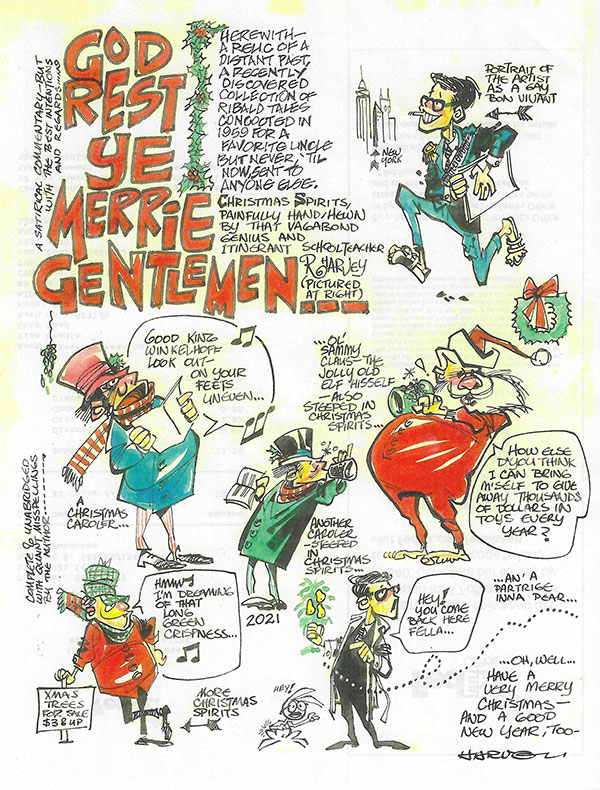
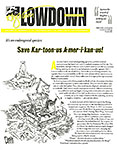
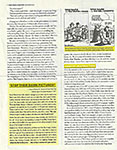
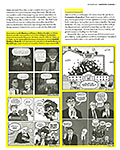
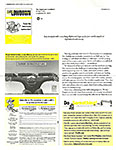
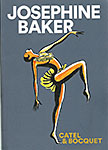
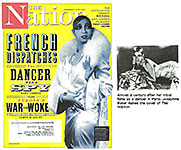
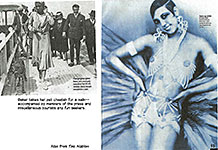
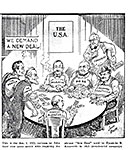
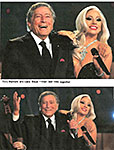
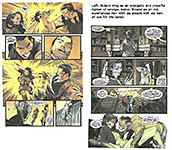
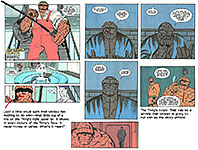
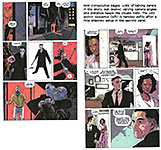
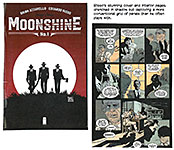
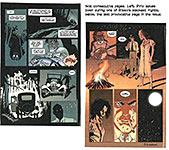
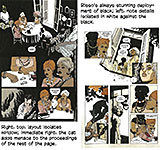
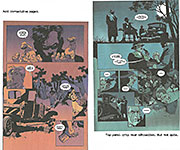
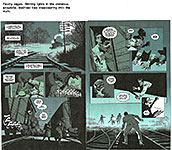
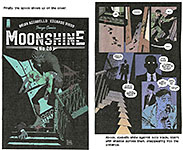
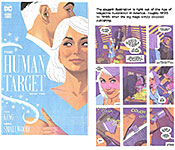
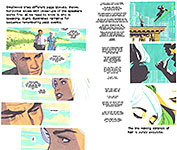
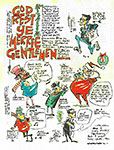
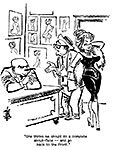
1.jpg)
1.jpg)
20.jpg)
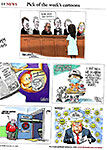
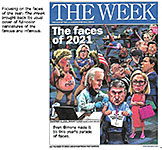
1.jpg)
2.jpg)
3.jpg)
